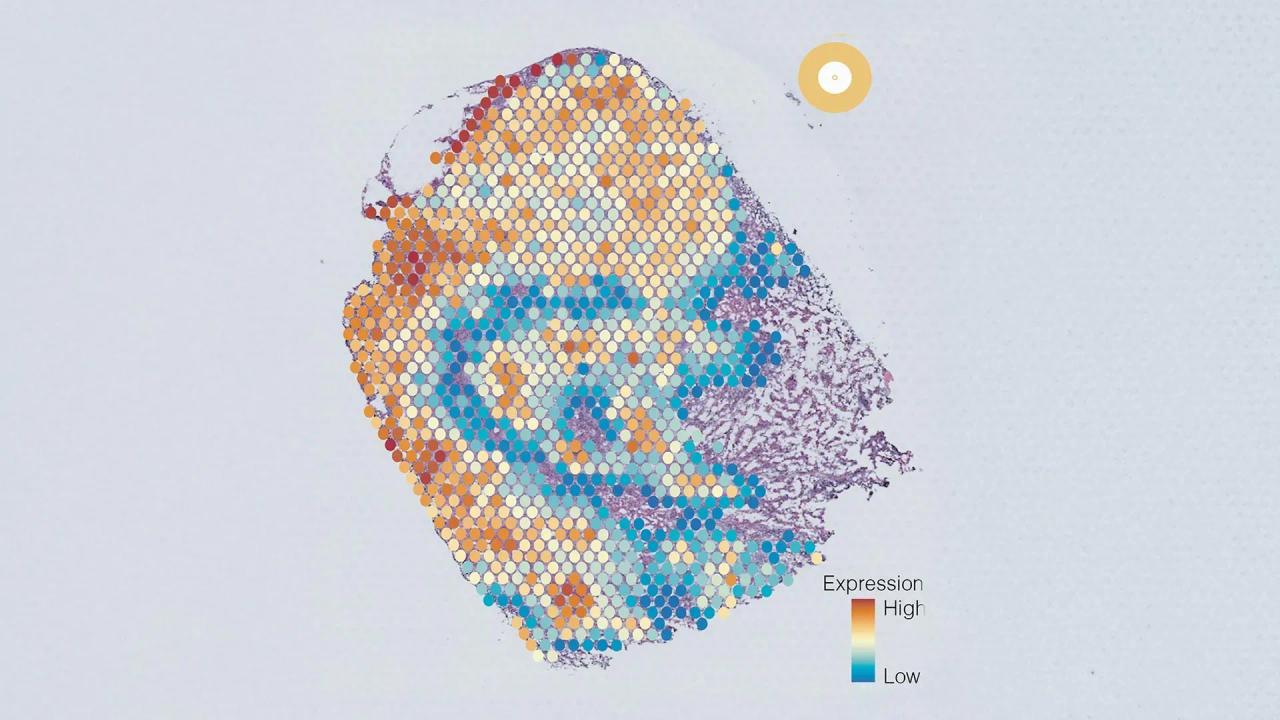AI Tool Predicts Cancer Aggressiveness Using Protein Markers, Paving Way for Personalized Therapies
2 Sources
2 Sources
[1]
AI tool predicts tumor aggressiveness using protein markers
São Paulo Research Foundation (FAPESP)Jul 15 2025 As cancer cases have increased worldwide, the disease has become more complex, presenting challenges to scientific advances in diagnosis and treatment. In this context, artificial intelligence (AI) has emerged as a valuable tool for predicting and detecting cases. A tool developed by Brazilian and Polish researchers may contribute to this process. The machine learning model can predict the aggressiveness of certain tumors by identifying specific proteins. It generates a stemness index ranging from zero to one, with zero indicating low aggressiveness and one indicating high aggressiveness. As the index increases, the cancer tends to become more aggressive and resistant to drugs and more likely to recur. The degree of stemness indicates how closely tumor cells resemble pluripotent stem cells, which can transform into almost any type of cell in the human body. As the disease progresses, malignant cells become less and less similar to the tissue from which they originated. These cells self-renew and exhibit an undifferentiated phenotype. The scientists developed the tool using data sets from the Clinical Proteomic Tumor Analysis Consortium (CPTAC) for 11 types of cancer. They then developed the protein expression-based stemness index (PROTsi). They analyzed more than 1,300 samples of breast, ovarian, lung (squamous cell carcinoma and adenocarcinoma), kidney, uterine, brain (pediatric and adult), head and neck, colon, and pancreatic cancers. By integrating PROTsi with proteomic data from 207 pluripotent stem cells, the group identified proteins that drive the aggressiveness of some types of these tumors. These molecules may be potential targets for new general or specific therapies. Thus, the tool contributes not only to advancing the clinical development of treatments but also to the personalization of cancer therapy. The study's findings and validation results were published in the scientific journal Cell Genomics. "Many of these proteins are already targets of drugs available on the market for cancer patients and other diseases. They can be tested in future studies based on this identification. We arrived at them by associating the stemness phenotype with tumor aggressiveness," explained Professor Tathiane Malta, of the Multiomics and Molecular Oncology Laboratory at the Ribeirão Preto Medical School of the University of São Paulo (FMRP-USP) in Brazil, when speaking with Agência FAPESP. Malta is the corresponding author of the article, along with Professor Maciej Wiznerowicz from Poznan University of Medical Sciences in Poland. She is supported by FAPESP through the Young Investigators Grant program (projects 19/14928-1 and 18/00583-0). The professor was one of the winners of an award in 2022 that aims to promote and recognize women's participation in science, in recognition of her work over the years. In 2018, she was the first author of an article published in Cell, the result of her postdoctoral research. In the article, her group developed a stemness index that can objectively measure the similarity between tumor samples and pluripotent stem cells. At the time, we developed the machine learning-based algorithm using the public tumor database maintained by The Cancer Genome Atlas [TCGA] in the United States. We relied on gene expression data, quantifying RNA, and epigenomics data, with DNA methylation. Now, we're working with the CPTAC database, based on proteomics, and we've updated our work with analyses of protein, a functional molecule that can be applied to treatment possibilities and clinical application." Professor Tathiane Malta, of the Multiomics and Molecular Oncology Laboratory at the Ribeirão Preto Medical School of the University of São Paulo Based on the results obtained thus far, PROTsi has a positive correlation with stemness scores derived from previously published transcriptomes, including the 2018 model. PROTsi was more effective in distinguishing between tumor and non-tumor samples, for example. Renan Santos Simões, Malta's advisor and co-first author of the article with Iga Kołodziejczak-Guglas from the International Institute for Molecular Oncology in Poznan, Poland, says that the progress made in characterizing stemness and considering protein levels and their modifications paves the way for a deeper understanding of tumor progression and mechanisms of resistance to current therapies. "Science advances slowly, carefully, and is built by many hands. It's gratifying to realize that we're contributing to this process. That's what motivates us: knowing that what we do today can make a real difference for patients, improving treatments and quality of life," says Simões, a FAPESP scholarship recipient. Brazilian researcher Emerson de Souza Santos, who is also a student of Malta, participated in the research as well. Picture On the last World Cancer Day on February 4, the World Health Organization (WHO) warned that 40 people worldwide are diagnosed with cancer every minute and require treatment. Tumors are one of the leading causes of death and affect the young population the most. A 2023 study published in BMJ Oncology revealed that the incidence of early-onset cancer in adults under 50 increased by 79% between 1990 and 2019, along with a 28% rise in cancer-related deaths. The study analyzed 29 types of cancer in 204 countries. The National Cancer Institute (INCA) in Brazil estimates that there will be 704,000 new cancer cases per year during the period from 2023 to 2025. According to 2023 Estimate - Cancer Incidence in Brazil, the most common malignant tumors are non-melanoma skin cancer (31% of total cases), followed by breast cancer in females (10.5%), prostate cancer (10%), colon and rectal cancer (6.5%), lung cancer (4.6%), and stomach cancer (3%). Results During the validation process, PROTsi demonstrated consistent performance across multiple data sets. It clearly distinguished between stem and differentiated cells, with different tumors falling at various intermediate levels. PROTsi demonstrated predictive ability in cases of uterine and head and neck cancer, for example. Additionally, the tool was more effective at differentiating higher-grade tumors in adenocarcinoma, uterine, pancreatic, and pediatric brain cancer samples. "We sought to build a model that can be applied to any cancer, but we found that it works better for some than for others. We're making a data source available for future work," says Malta. According to the professor, the USP group is testing additional computational models in an effort to improve predictions. São Paulo Research Foundation (FAPESP) Journal reference: Kołodziejczak-Guglas, I., et al. (2025). Proteomic-based stemness score measures oncogenic dedifferentiation and enables the identification of druggable targets. Cell Genomics. doi.org/10.1016/j.xgen.2025.100851.
[2]
AI-based tool can 'measure' cancer aggressiveness and paves the way for new therapies
As cancer cases have increased worldwide, the disease has become more complex, presenting challenges to scientific advances in diagnosis and treatment. In this context, artificial intelligence (AI) has emerged as a valuable tool for predicting and detecting cases. A tool developed by Brazilian and Polish researchers may contribute to this process. Their research is published in the journal Cell Genomics. The machine-learning model can predict the aggressiveness of certain tumors by identifying specific proteins. It generates a stemness index ranging from zero to one, with zero indicating low aggressiveness and one indicating high aggressiveness. As the index increases, the cancer tends to become more aggressive and resistant to drugs and more likely to recur. The degree of stemness indicates how closely tumor cells resemble pluripotent stem cells, which can transform into almost any type of cell in the human body. As the disease progresses, malignant cells become less and less similar to the tissue from which they originated. These cells self-renew and exhibit an undifferentiated phenotype. The scientists developed the tool using data sets from the Clinical Proteomic Tumor Analysis Consortium (CPTAC) for 11 types of cancer. They then developed the protein expression-based stemness index (PROTsi). They analyzed more than 1,300 samples of breast, ovarian, lung (squamous cell carcinoma and adenocarcinoma), kidney, uterine, brain (pediatric and adult), head and neck, colon, and pancreatic cancers. By integrating PROTsi with proteomic data from 207 pluripotent stem cells, the group identified proteins that drive the aggressiveness of some types of these tumors. These molecules may be potential targets for new general or specific therapies. Thus, the tool contributes not only to advancing the clinical development of treatments but also to the personalization of cancer therapy. "Many of these proteins are already targets of drugs available on the market for cancer patients and other diseases. They can be tested in future studies based on this identification. We arrived at them by associating the stemness phenotype with tumor aggressiveness," explained Professor Tathiane Malta, of the Multiomics and Molecular Oncology Laboratory at the Ribeirão Preto Medical School of the University of São Paulo (FMRP-USP) in Brazil, speaking with Agência FAPESP. Malta is the corresponding author of the article, along with Professor Maciej Wiznerowicz from Poznan University of Medical Sciences in Poland. The professor was one of the winners of an award in 2022 that aims to promote and recognize women's participation in science, in recognition of her work over the years. In 2018, she was the first author of an article published in Cell, the result of her postdoctoral research. In the article, her group developed a stemness index that can objectively measure the similarity between tumor samples and pluripotent stem cells. "At the time, we developed the machine-learning-based algorithm using the public tumor database maintained by the Cancer Genome Atlas in the United States. We relied on gene expression data, quantifying RNA, and epigenomics data, with DNA methylation. Now, we're working with the CPTAC database, based on proteomics, and we've updated our work with analyses of protein, a functional molecule that can be applied to treatment possibilities and clinical application," adds Malta. Based on the results obtained thus far, PROTsi has a positive correlation with stemness scores derived from previously published transcriptomes, including the 2018 model. PROTsi was more effective in distinguishing between tumor and non-tumor samples, for example. Renan Santos Simões, Malta's advisor and co-first author of the article with Iga Kołodziejczak-Guglas from the International Institute for Molecular Oncology in Poznan, Poland, says that the progress made in characterizing stemness and considering protein levels and their modifications paves the way for a deeper understanding of tumor progression and mechanisms of resistance to current therapies. "Science advances slowly, carefully, and is built by many hands. It's gratifying to realize that we're contributing to this process. That's what motivates us: knowing that what we do today can make a real difference for patients, improving treatments and quality of life," says Simões. Brazilian researcher Emerson de Souza Santos, who is also a student of Malta, participated in the research as well. On the last World Cancer Day on February 4, the World Health Organization (WHO) warned that 40 people worldwide are diagnosed with cancer every minute and require treatment. Tumors are one of the leading causes of death and affect the young population the most. A 2023 study published in BMJ Oncology revealed that the incidence of early-onset cancer in adults under 50 increased by 79% between 1990 and 2019, along with a 28% rise in cancer-related deaths. The study analyzed 29 types of cancer in 204 countries. The National Cancer Institute (INCA) in Brazil estimates that there will be 704,000 new cancer cases per year during the period from 2023 to 2025. According to the 2023 Estimate -- Cancer Incidence in Brazil, the most common malignant tumors are non-melanoma skin cancer (31% of total cases), followed by breast cancer in females (10.5%), prostate cancer (10%), colon and rectal cancer (6.5%), lung cancer (4.6%), and stomach cancer (3%). During the validation process, PROTsi demonstrated consistent performance across multiple data sets. It clearly distinguished between stem and differentiated cells, with different tumors falling at various intermediate levels. PROTsi demonstrated predictive ability in cases of uterine and head and neck cancer, for example. Additionally, the tool was more effective at differentiating higher-grade tumors in adenocarcinoma, uterine, pancreatic, and pediatric brain cancer samples. "We sought to build a model that can be applied to any cancer, but we found that it works better for some than for others. We're making a data source available for future work," says Malta. According to the professor, the USP group is testing additional computational models in an effort to improve predictions.
Share
Share
Copy Link
Brazilian and Polish researchers have developed an AI-based tool that can predict tumor aggressiveness by analyzing protein markers, potentially revolutionizing cancer diagnosis and treatment.
AI-Powered Cancer Aggressiveness Prediction
Researchers from Brazil and Poland have developed an innovative artificial intelligence tool that predicts tumor aggressiveness by identifying specific protein markers. This breakthrough, published in the journal Cell Genomics, could significantly impact cancer diagnosis and treatment strategies
1
2
.
Source: News-Medical
The PROTsi Model
The machine learning model, named protein expression-based stemness index (PROTsi), generates a stemness index ranging from zero to one. A score of zero indicates low aggressiveness, while one signifies high aggressiveness. As the index increases, the cancer tends to become more aggressive, drug-resistant, and likely to recur
1
.Professor Tathiane Malta from the University of São Paulo explains, "Many of these proteins are already targets of drugs available on the market for cancer patients and other diseases. They can be tested in future studies based on this identification"
1
.Development and Validation
The researchers developed PROTsi using data sets from the Clinical Proteomic Tumor Analysis Consortium (CPTAC) for 11 types of cancer. They analyzed over 1,300 samples of various cancers, including breast, ovarian, lung, kidney, uterine, brain, head and neck, colon, and pancreatic cancers
1
2
.By integrating PROTsi with proteomic data from 207 pluripotent stem cells, the team identified proteins driving tumor aggressiveness. These molecules could be potential targets for new general or specific therapies
1
.Advancements in Cancer Research
This new tool builds upon previous work by Professor Malta and her team. In 2018, they developed a stemness index based on gene expression and epigenomic data. The current PROTsi model focuses on proteomics, analyzing functional molecules that can be applied to treatment possibilities and clinical applications
2
.Renan Santos Simões, co-first author of the study, emphasizes the significance of this progress: "It's gratifying to realize that we're contributing to this process. That's what motivates us: knowing that what we do today can make a real difference for patients, improving treatments and quality of life"
1
.Related Stories
Implications for Cancer Treatment
The PROTsi tool contributes not only to advancing the clinical development of treatments but also to the personalization of cancer therapy. It has shown consistent performance across multiple data sets and demonstrated predictive ability in cases of uterine and head and neck cancer
2
.Global Cancer Landscape
The development of this AI tool comes at a crucial time in the fight against cancer. The World Health Organization reports that 40 people worldwide are diagnosed with cancer every minute
1
. A 2023 study published in BMJ Oncology revealed a 79% increase in early-onset cancer incidence among adults under 50 between 1990 and 20191
2
.
Source: Medical Xpress
In Brazil alone, the National Cancer Institute estimates 704,000 new cancer cases per year from 2023 to 2025
1
2
. This underscores the urgent need for advanced diagnostic and treatment tools like PROTsi in the global fight against cancer.As cancer continues to present complex challenges, AI-powered tools like PROTsi offer hope for more accurate predictions, personalized treatments, and improved patient outcomes in the future.
References
Summarized by
Navi
[1]
Related Stories
AI Tool Uncovers Five Distinct Cancer Cell Groups, Revolutionizing Tumor Characterization and Treatment
25 Jun 2025•Health

AI Tool SCORPIO Predicts Cancer Immunotherapy Response Using Routine Blood Tests
07 Jan 2025•Health

AI Tool Developed by Mount Sinai Researchers Poised to Revolutionize Prostate Cancer Care
24 Sept 2024

Recent Highlights
1
Google launches Gemini 3 Flash as default AI model, delivering speed with Pro-grade reasoning
Technology

2
OpenAI launches GPT Image 1.5 as AI image generator war with Google intensifies
Technology

3
OpenAI launches ChatGPT app store, opening doors for third-party developers to build AI-powered apps
Technology





